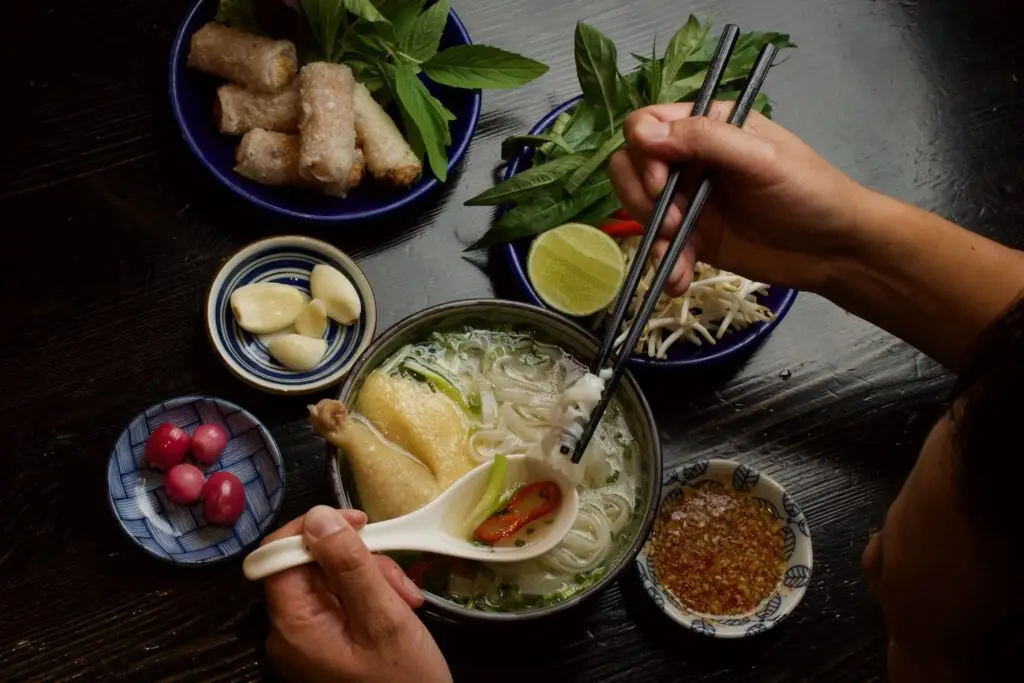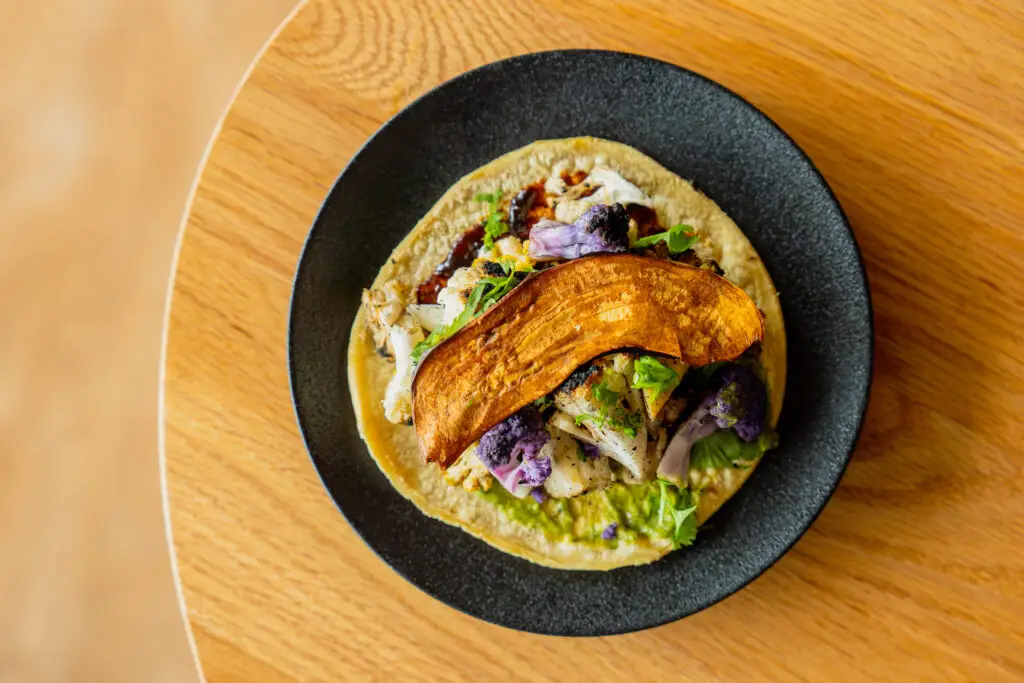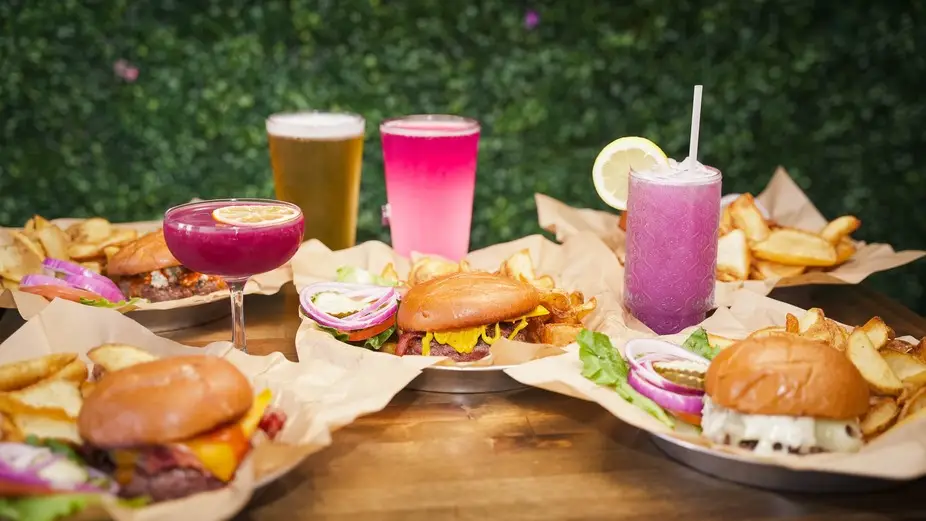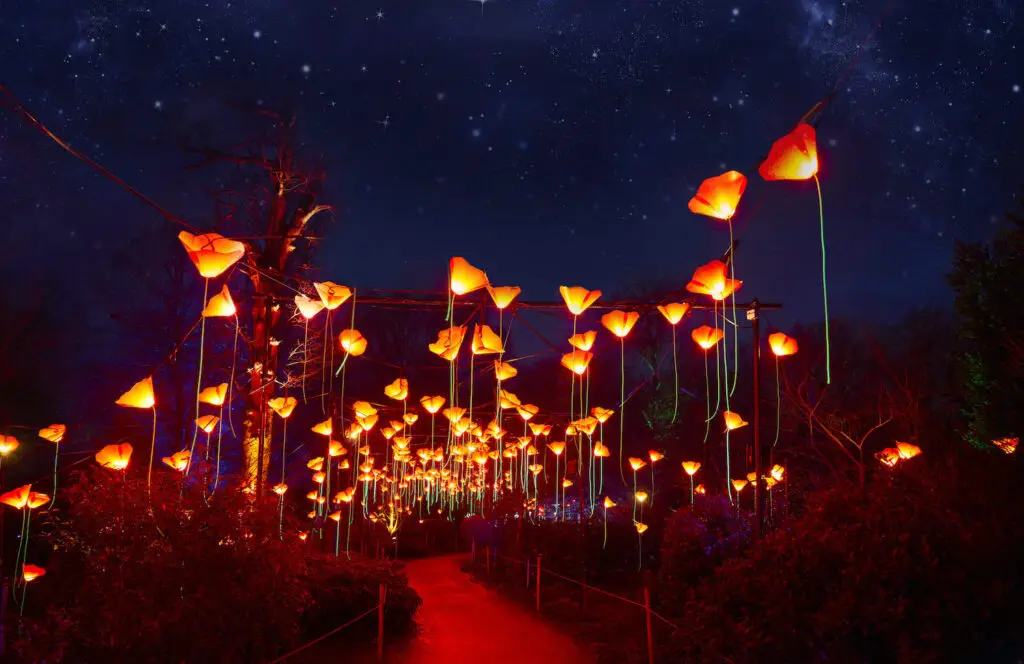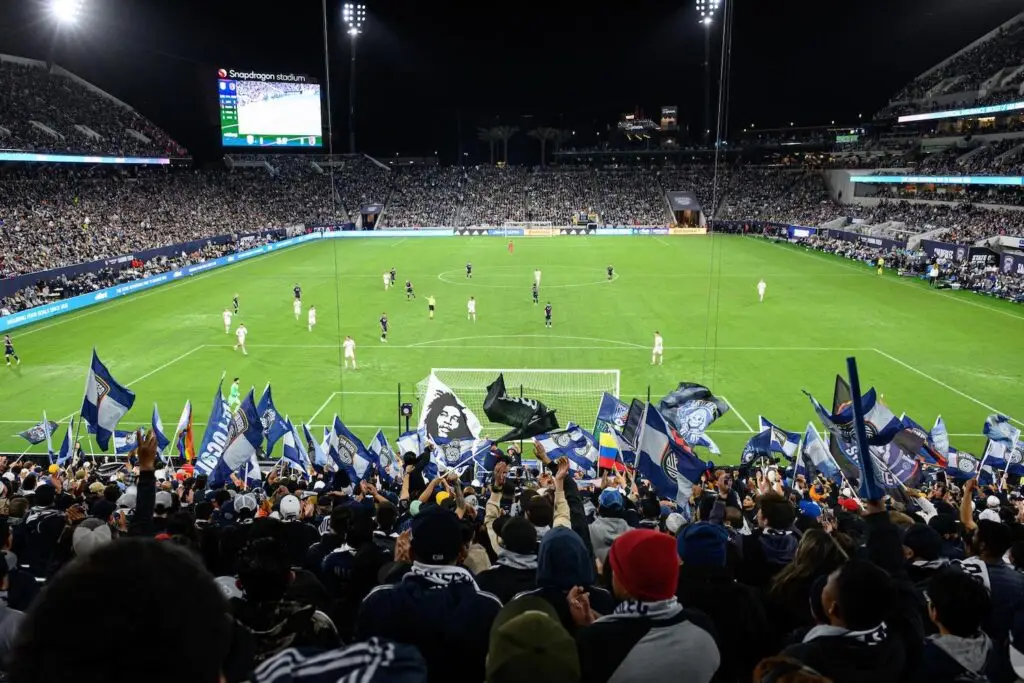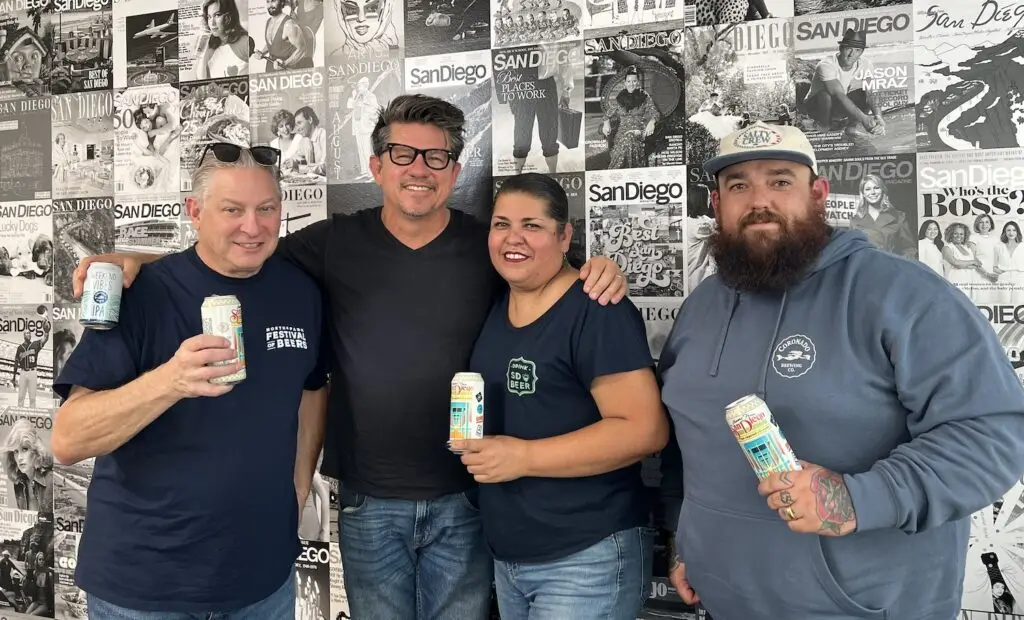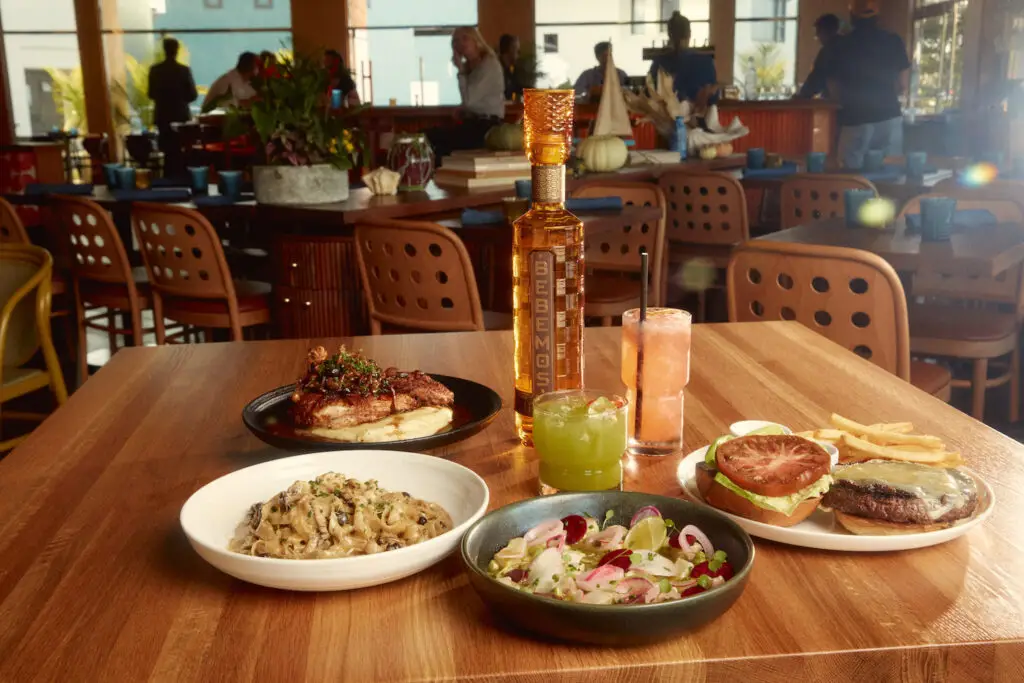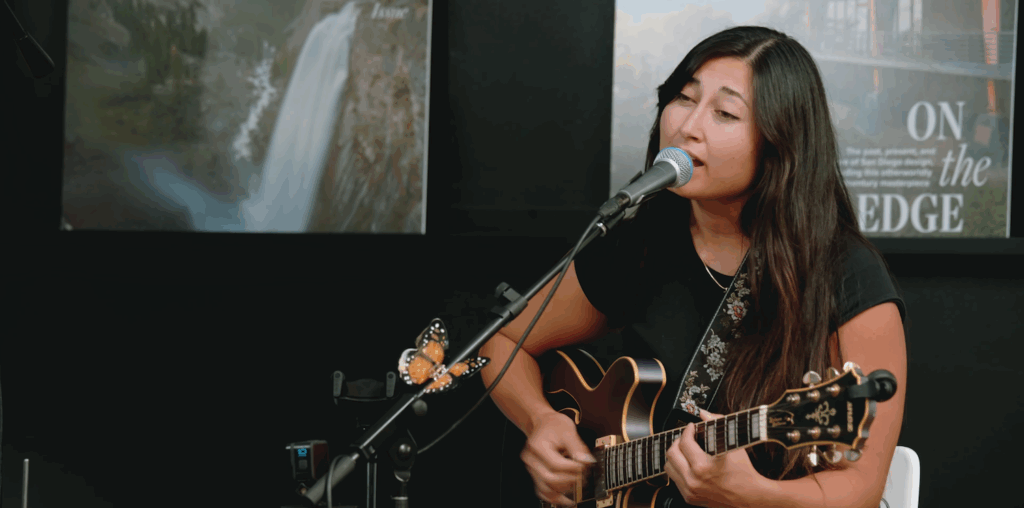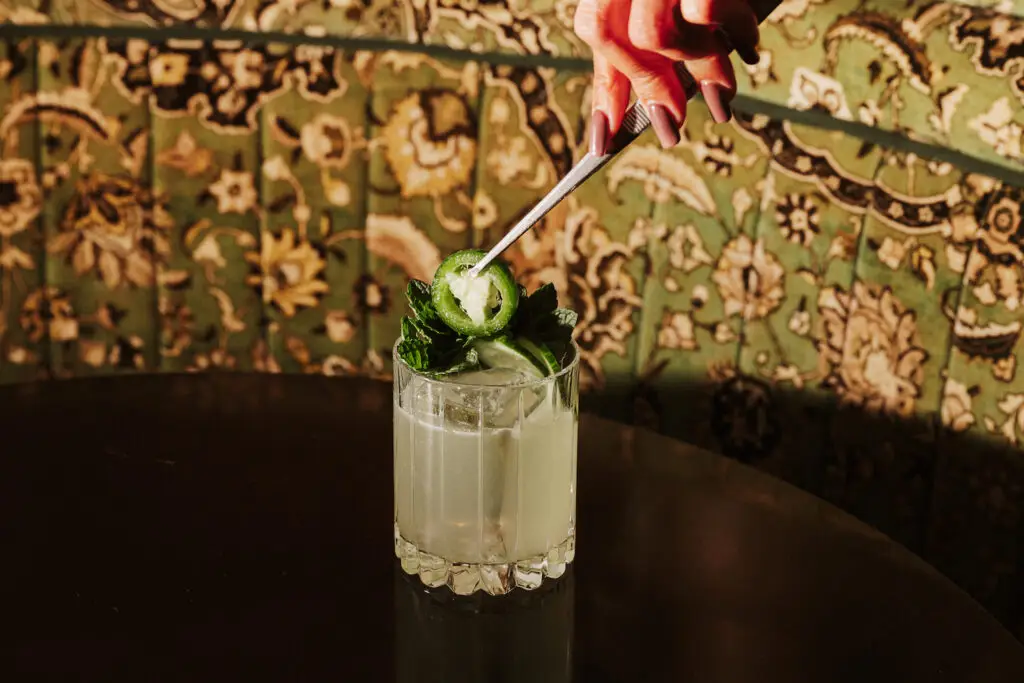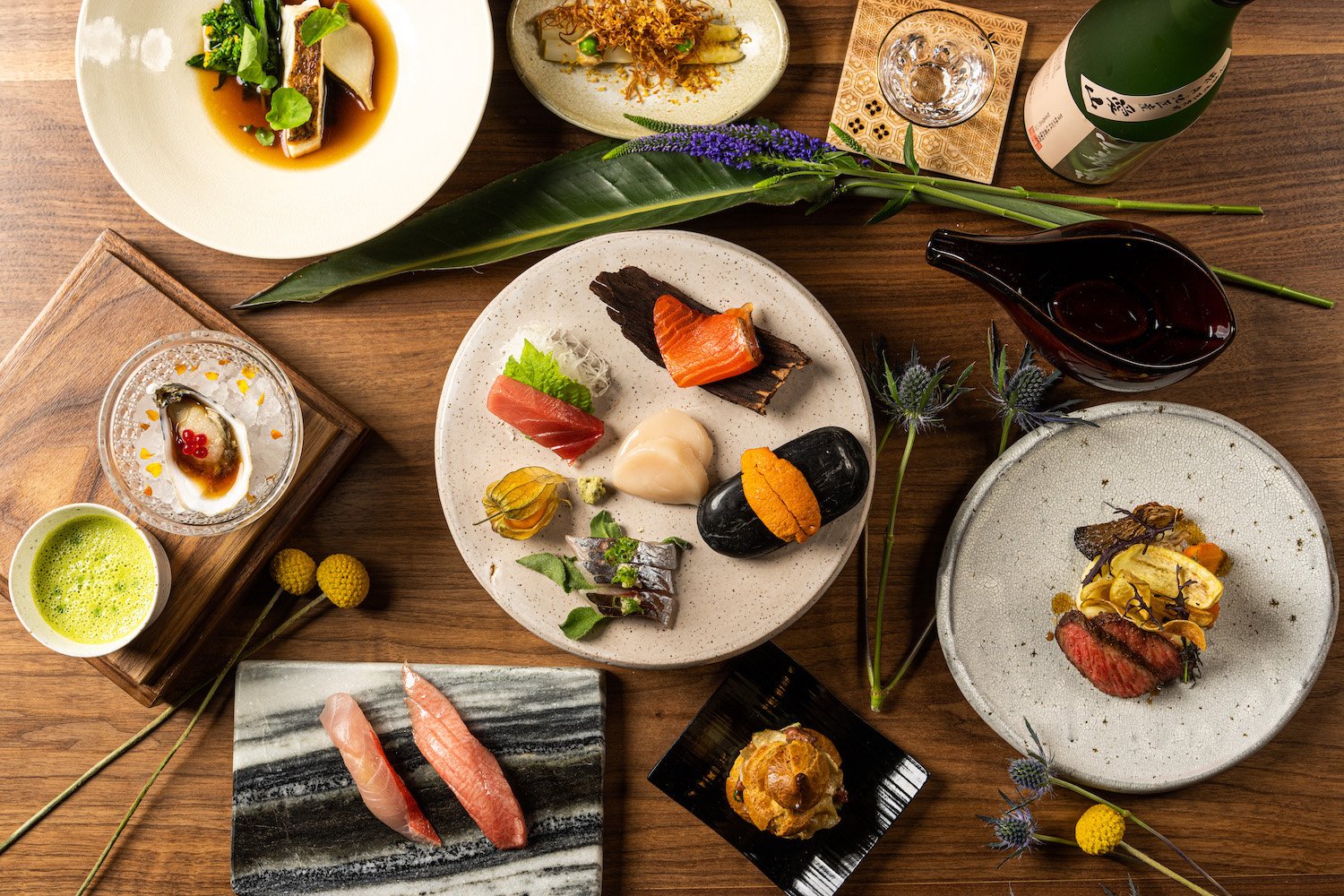Logically, the restaurant scene should’ve been dead-silent this year. Food costs went berserk. Labor costs swelled. We all knew how to cook because we were marooned in our own homes for a few years. And yet San Diego’s food scene unveiled a few dozen more pretty fantastic restaurants in 2023. This is what I love about restaurants and the people behind them. It is not a get-rich-quick scheme. Sure, money is to be Danny Meier’d for the few and the lucky and the ulcered.
But financial analysts who are not sadistic would advise you to put your money into the stock market, into real estate, into off-brand Beanie Babies before putting it into the restaurant industry. That means all you’re left with are people who do it because they have to, or because the dream of creating a hospitable place that makes humans happy is just too compelling to ignore.
Here are the new arrivals that won me over in 2023 and became part of my own personal hit list of the best new restaurants in San Diego.
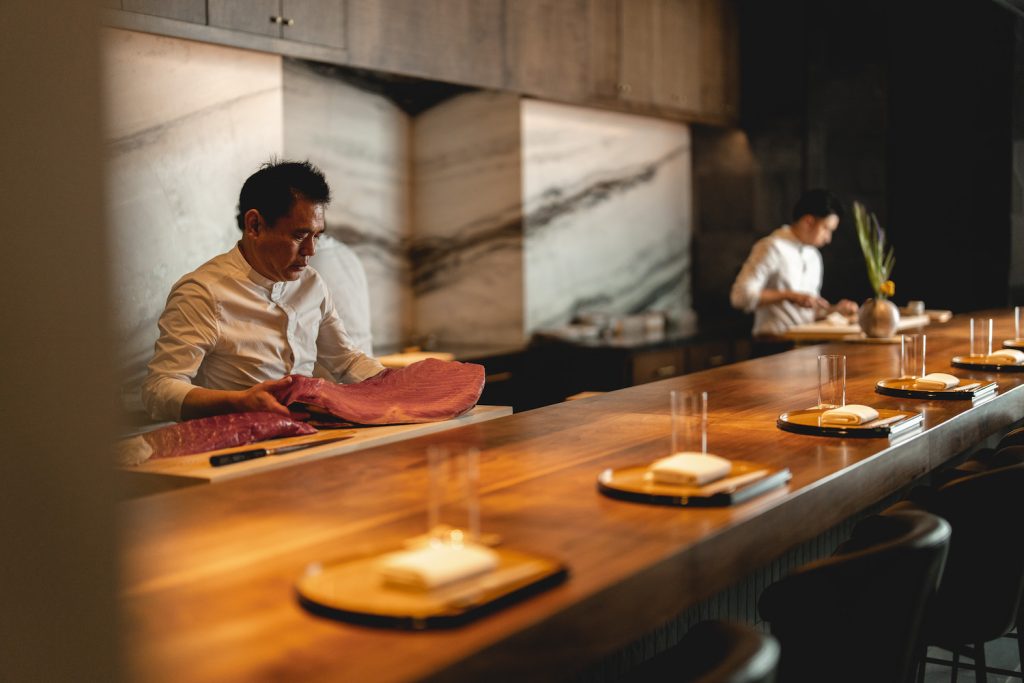
Kinme
Omakase-only sushi spots took over the whole dang scene (omakase means you eat what chef deigns their best and most creative stuff that day, with no menu to choose from). Azuki in Bankers Hill has long been one of the city’s favorite sushi spots. It was never hype-trained. It just quietly, consistently snuck up on us all, probably because of owner Shihomi Borillo and chef Nao Ichimura’s obsession with the good-food movement.
Kinme is their tiny (900 square feet), 10-seat, omakase-only concept a block up the hill. It’s a mix of Edomae-style sushi and kaiseke, a seasonal, multi-course Japanese meal. The menu changes all the time, but it has included things like grilled corn with koji miso and tomatillo salt, A5 wagyu in ginger shoyu, and chawanmushi, plus Japanese whiskys, rare sake, and top-notch tea to finish.
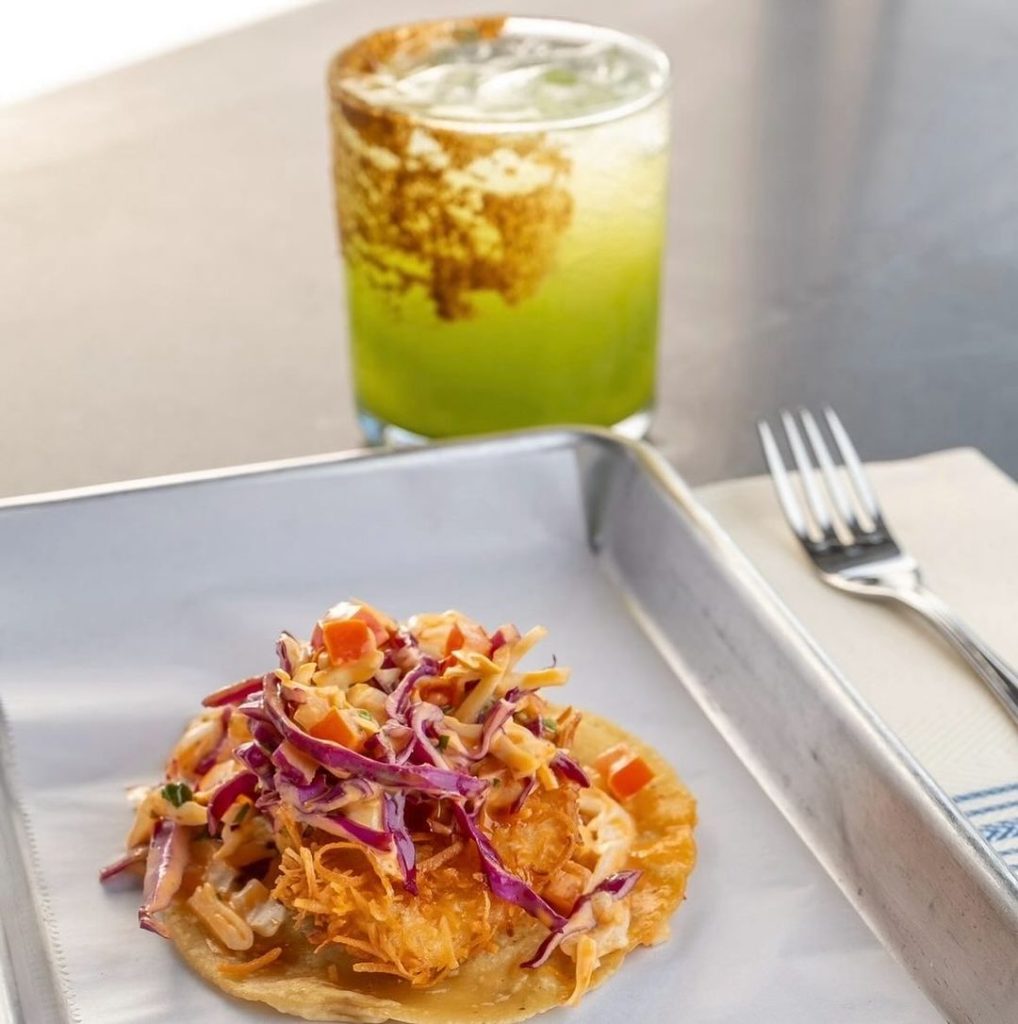
Fish Guts
A hell of a fish-taco-and-sammy shop. San Diego born and raised, Pablo Becker helped open some of the bigger Mexican restaurants in the country with his cousin, famed Mexican chef Richard Sandoval. He needed a break, so he moved to Chicago for five years and became a line cook. He was offered management roles, refused. Head down, cooking. Five years.
Fish Guts is his return home, a small-but-mighty corner spot in Barrio Logan. It serves sandwiches during the day, tacos at night, using almost all sustainable fish from local boats. Get the blackened whitefish with the jalapeño-cabbage slaw, the mushroom taco, or the fantastic Negra Modelo beer–battered lunch sammy with Mexican tartar sauce.
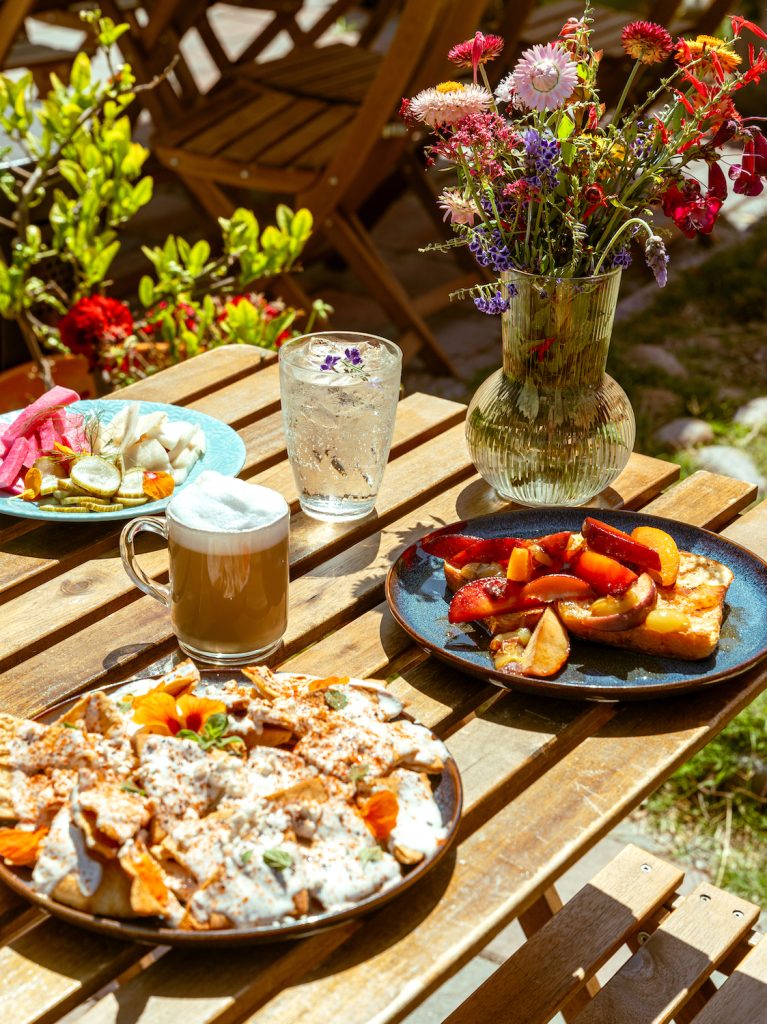
MAKE Projects
MAKE Projects is one of the city’s most inspiring food nonprofits, helping low-income refugees and immigrant women learn farming, cooking, and catering skills and earn a living as they acclimate to their new life in the US.
During the weekends, the women cook and sell specialties from their native countries—East African mandazi (they’re like beignets), halloumi with farm veggies, pancakes with Cambodian orange syrup, Afghan chicken tacos with Haitian pikliz—made with ingredients from their urban farm. Now they have a permanent home in North Park.
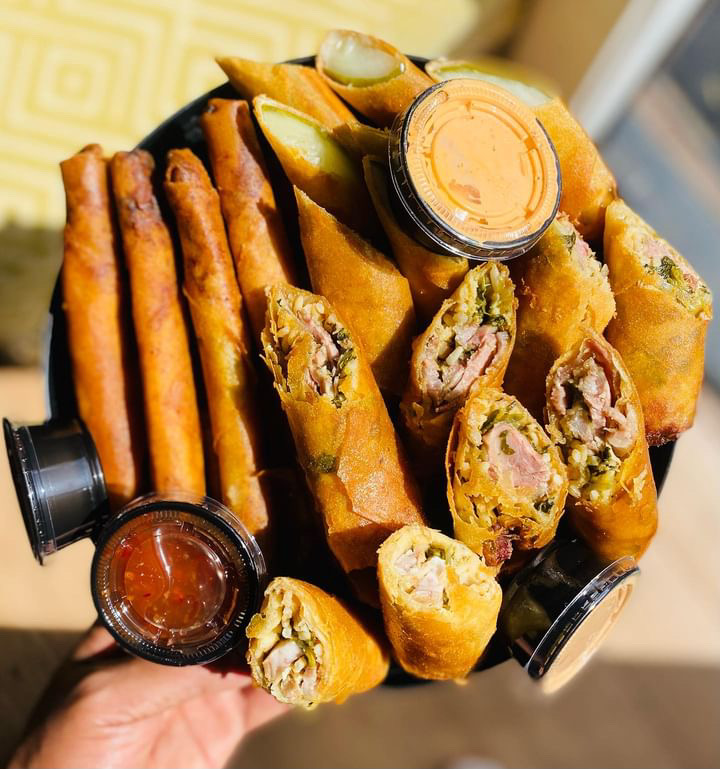
Lia’s Lumpia
I could hang on this back porch all day, joy-shoveling lumpia with a couple beers. Chef Spencer Hunter’s grandma owned one of the first Filipino restaurants in San Diego decades ago and was famed for her hand-rolled lumpia (being lazy, but real close to accurate, let’s call it the egg roll of the Philippines).
Spencer went to college for sustainable hospitality and cooked in huts in South America, then came home to work through some top-notch kitchens (Searsucker, Waters Fine Foods + Catering). He and his mom, Benelia Santos-Hunter, started doing lumpia pop-ups at festivals, including Coachella. They went on Great Food Truck Race, nearly and probably should’ve won (a contestable second place), and found a permanent spot in Barrio Logan in an old house filled with pop-culture and Filipino cultural knicknacks.
It’s a total work in progress, design-wise. This is two family members ad-hoc’ing a dream, and I like that. Spencer will do seasonal riffs (ramen lumpia, Thanksgiving lumpia), but get “Lola’s Lumpia,” stuffed with a mix of beef and pork marinated in oyster sauce and various things. And don’t miss their ube-coffee ice cream with white chocolate shavings.
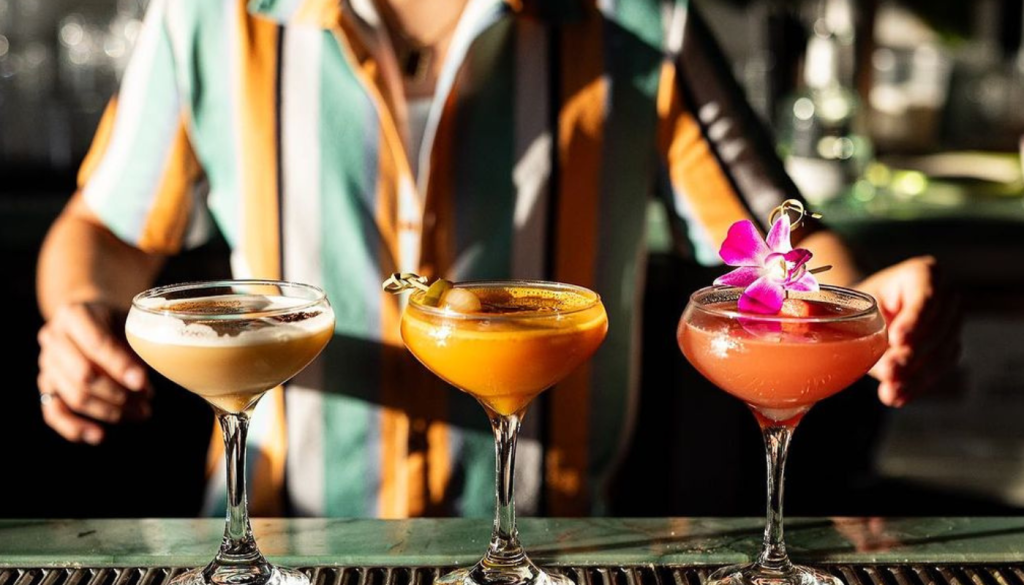
El Sueño
Pietro Busalacchi is a damn likable hospitality guy—a real host—and he can make a hell of a cocktail. That alone set a good base, one that El Sueño delivers on. The Point Loma High grad (a cousin of iconic San Diego Italian food family the Busalacchis) worked at TomTom in LA before coming home to open two concepts in Old Town. El Sueño is a partnership with Gustavo Rios—a Mexican concept based on food from Baja, the Huasteca region in the Gulf (where Rios’ mother is from), and Busalacchi’s travels through Mexico. It’s designed like a sweeping jungle in a two-story, indoor-outdoor space. Sit at the edge of the bar overlooking the patio and order the enchiladas suizas and a Bad Bunny (jalapeño-infused arette blanco, Mandre espadin, and carrot juice).
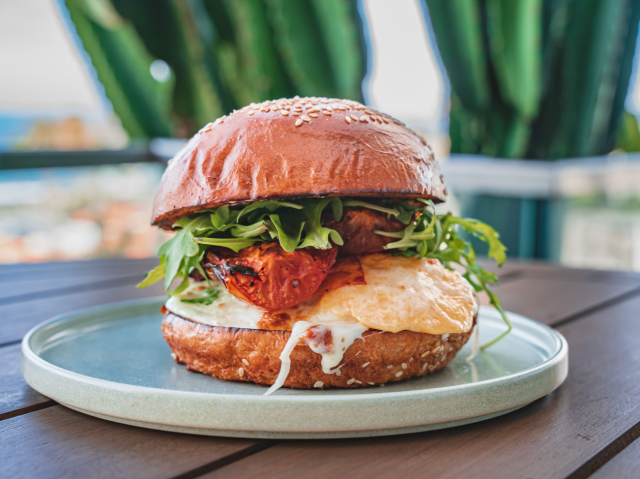
The Kitchen at MCASD
Considering how important it is for a museum to have good taste in art, art tasted terrible for decades. Restaurateur Tracy Borkum is fixing that. She got a degree in art history from UC Berkeley before she became one of San Diego’s top restaurateurs (starting with Cucina Urbana), so it makes sense that she’s becoming the city’s art-foodist. She and partner/chef Tim Kolanko are putting real-deal restaurants in culture temples. It’s a smart joining of forces, doubling the “attraction” of a cultural space and rehabbing the sector’s reputation for limp-sandwich cafés.
They opened Artifact at the Mingei Museum a couple years ago (Michelin gave it a Bib Gourmand nod), and this year they launched The Kitchen at MCASD as part of the La Jolla museum’s $100 million renovation, serving breakfast and lunch. Get the avocado bowl (with Aleppo pistachio dukkah, garlic creme fraîche, and carrot molasses) or the lamb burger with tzatziki and chili-mango chutney.
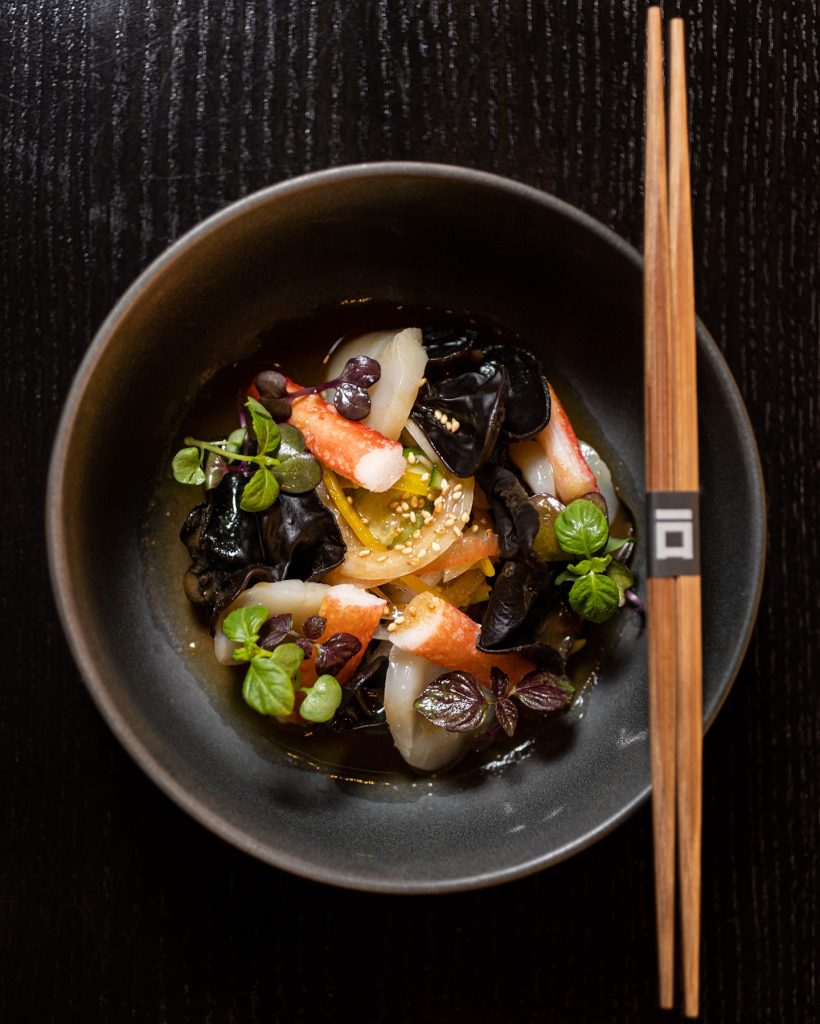
Hitokuchi
Chef John Hong first made his name by braving the nightclub-food scene at Bang Bang in downtown, a concept that dared to ask, “What if you could dance and drink and not have terrible food?” Then he became one of the first in San Diego to do omakase-only with Hidden Fish on Convoy. And now this, next door.
Hitokuchi returns Hong to his Japanese cooking roots. There’s a killer raw bar section (uni and caviar with soy-marinated salmon roe) and great toasts (toro tartare with wasabi crème fraîche) and entrées (creamy lobster basil, braised pork belly with mala sauce). It brought more national attention to the city when Esquire named it one of this year’s “Best New Restaurants in America.” Hong’s a talent.
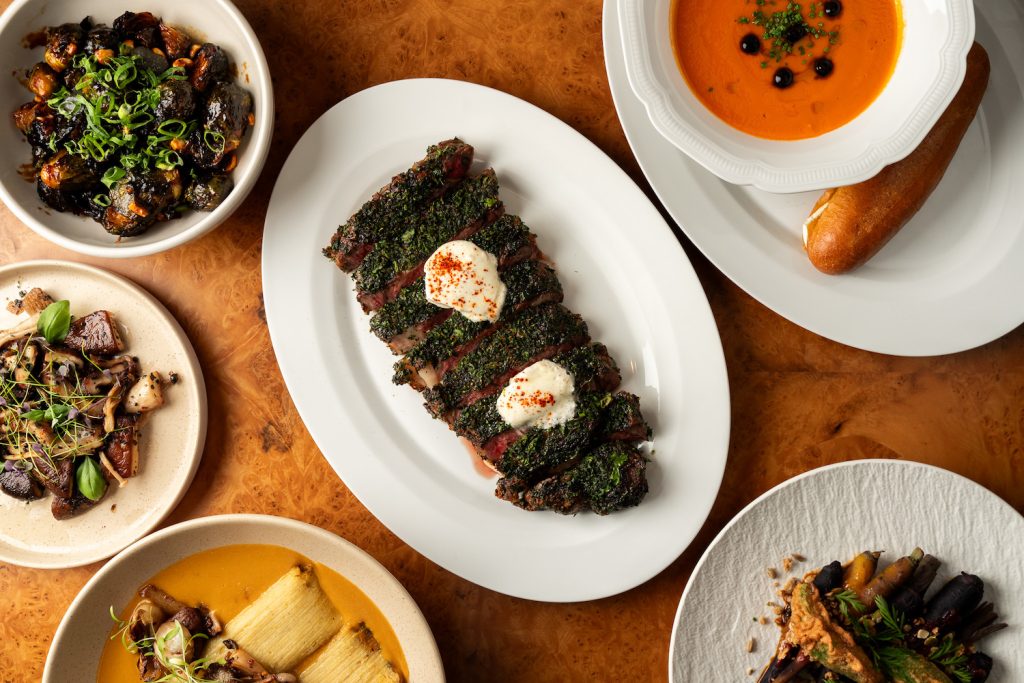
Lilian’s Kitchen
The Inn at Rancho Santa Fe is one of the county’s classic resorts, tucked into those horsey, eucalyptus-shrouded backroads in North County. The whole property got new owners and a $50 million renovation recently, and Clique Hospitality (Lionfish, Serea) was tapped to do the restaurant (Lilian’s Kitchen) and bar (Bing’s).
Lilian’s is a stunner. Heavy woods and olive-green walls and hunter-green leather stools are patterned into a texturalist’s dream. In the kitchen is Moira Hill, a local talent who worked her way up through some of the county’s best (George’s, Juniper & Ivy, Trust, Campfire). The restaurant serves meals for all three rounds of the day, dinner being the main show: grilled octopus, peking duck tostadas, chimichurri lamb chops, oysters, grilled lobster frites in béarnaise, veal Milanese and ribeyes… you name it.
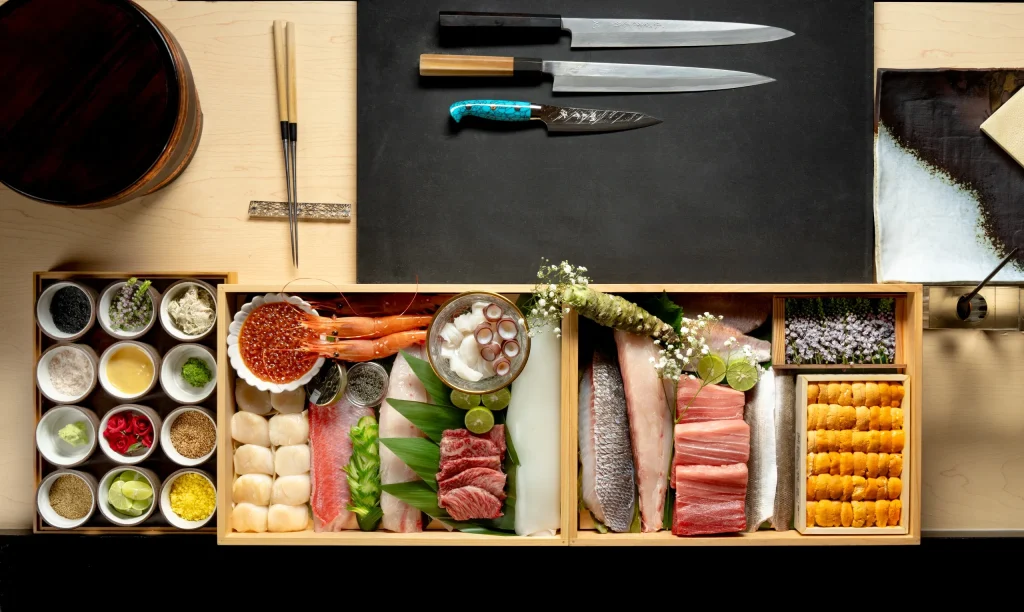
Sushi Gaga
Ayaka Ito has been one of the main creative forces behind East Village for a while now. Originally from Nagoya, Japan, she’s a certified sake master and her original concept, BeShock Ramen, is one of the more underrated noodle bars in the city. This year she opened three distinct new concepts nearby: Asa Bakery (coffee, tea, Japanese sandos), Bar Kamon (a speakeasy), and Sushi Gaga, a 10-seat, omakase-only sushi room with nigiri, apps, and noodles that rotate according to the chef’s whim (but sometimes include oyster and lobster confit and ramen with sea bream chashu).
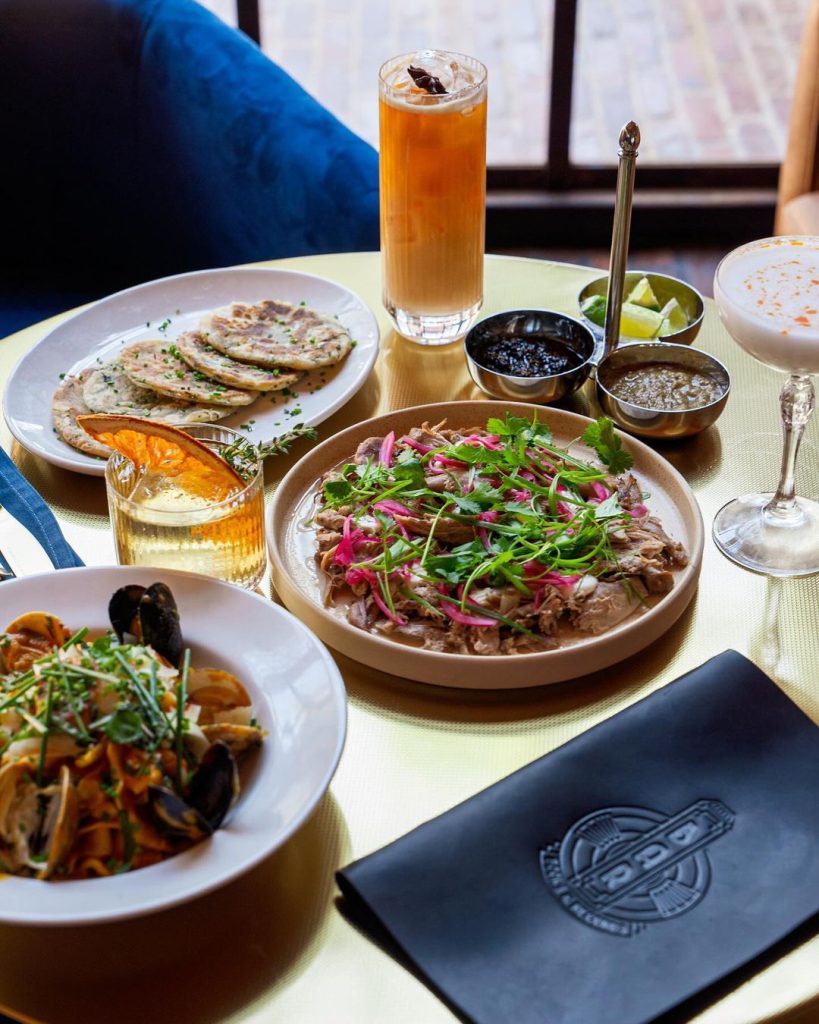
Books & Records
Since Anderson Clark and Brian Douglass opened Common Stock in Hillcrest in 2018, they’ve become some of the city’s better operators. Common Stock is retro comfort (Peruvian rotisserie chicken, pimento grilled cheese with roasted tomato soup, steak frites). Books & Records is their new dinner-and-drinks-and-jazz-and-culture concept that’s breathing life into an iconic space, the former Bankers Hill Bar + Restaurant (it was gutting when that closed during the pandemic).
The menu from culinary director Sam Deckman (son of Baja star Drew Deckman) is largely Baja-Asian: tuna crudo with kimchi-pineapple aioli and candied jalapeño; charred broccoli with labneh and yuzu ponzu; seabass al pastor; Coke-braised duck carnitas with shiso pancakes. Live jazz every Friday and Saturday night fills the city’s aching supper-club hole.
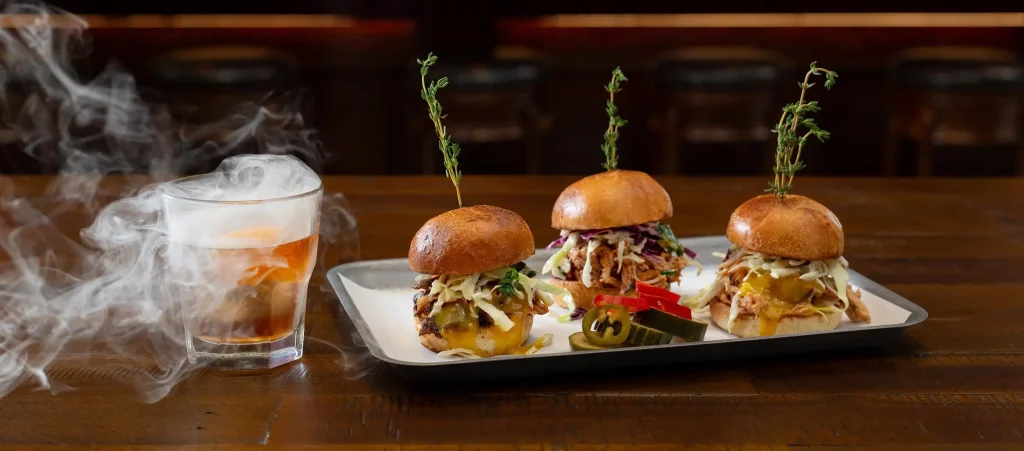
Smokehouse & Bar at the Historic Laundry
And now the greatest beach lawn smells like brisket. San Diego’s grand dame property is entering the final phase of its $550 million restoration and enhancement. It is exceedingly hard to mess with a classic. Pitchforks are at the ready. The gentry are emotionally vulnerable and allergic to change. One of the better things the Hotel Del did was retrofit the old laundry warehouse into a smokehouse with drop-dead gorgeous brick walls, ancient wooden beams, art and ironwork, and a bar with thirsty-sheriff vibes. Go in and get the smokehouse plate with options for brisket, pulled pork, ribs, jalapeño-cheddar sausage, smoked chicken leg, tater tots, the works. Load up a potato. Smoke the mac ‘n cheese. Go nuts.
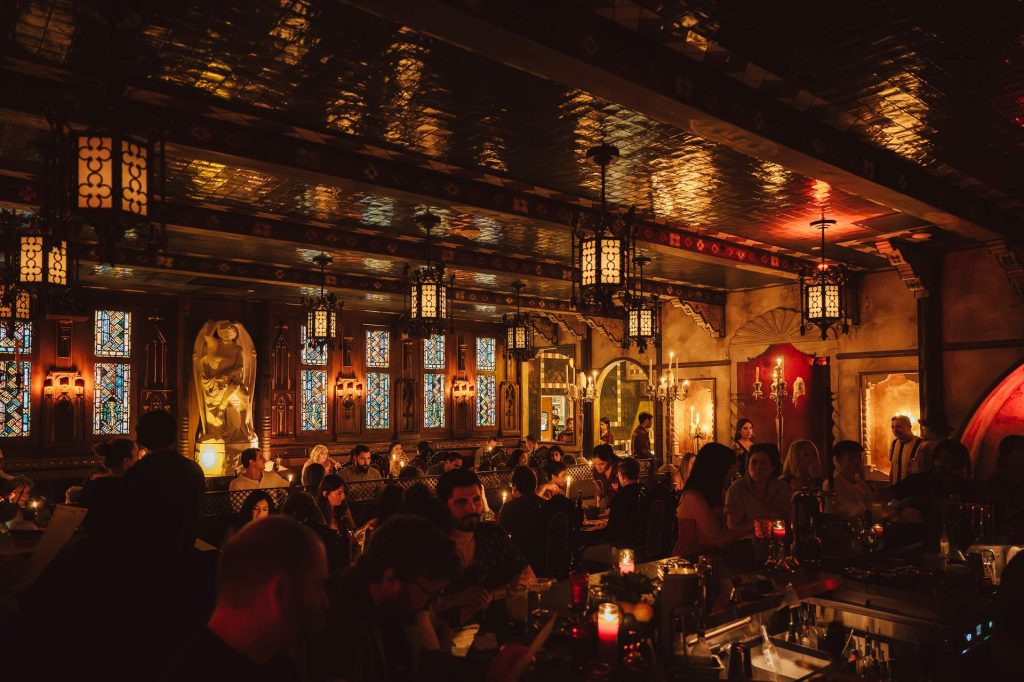
Quixote
Personally, the only design that gets me emotional is minimalism or maximalism. Inbetweenism makes me think of taxes and the greatest failure, which is trying to mildly please everyone. You wind up standing in a yawn of a room, the building equivalent of dentist music and being dead inside. The Lafayette Hotel is a maximalist art project on a grand scale, a chaos zoo of patterns and textures and oddities. I love it as much as others will get vertigo from it.
The signature restaurant is Quixote, a pagan’s dining cathedral with gothic arches and stained glass and drippy light fixtures, lit for secrets. The chef is José Cepeda, a young talent originally from Puebla, Mexico, who did time at LA’s Mexican standout Mirame. Quixote’s menu is roughly based on his mother’s recipes from Oaxaca: guacamole with chicharrones and chapulines (marinated and seasoned grasshoppers); Oaxacan fondue with chorizo and truffle; memelitas (duck carnitas with cotija adobado and mole). One whole dining room looks like a prayer room or a tomb. No ambition was denied.
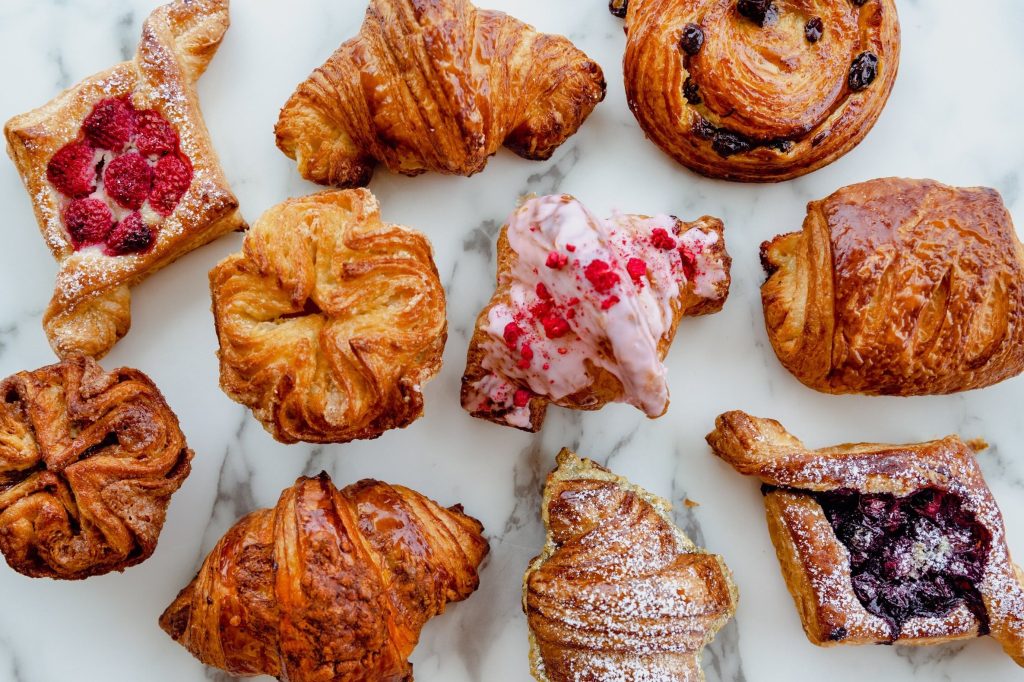
Pâtisserie Mélanie
This is a cute pink box of a French bakery and coffee house that adapts to a small-menu restaurant after dark. It’s the sort of neighborhood spot with espresso machines in the front and fermenting dough and cassoulets in the back. It’s the work of Melanie Dunn, a longtime English teacher at Crawford High who spent a few years studying dough art at Le Cordon Bleu. In the morning, it’s all espresso creations and viennoiseries (yeast-leavened treats like kouignettes, croissants, and chaussons), weekend desserts (bouchons, financiers, macarons, tartes), and brunch bites (croques and quiches). At night, it offers a very focused French dinner service (coq au vin, beef Bourguignon, cassoulet).
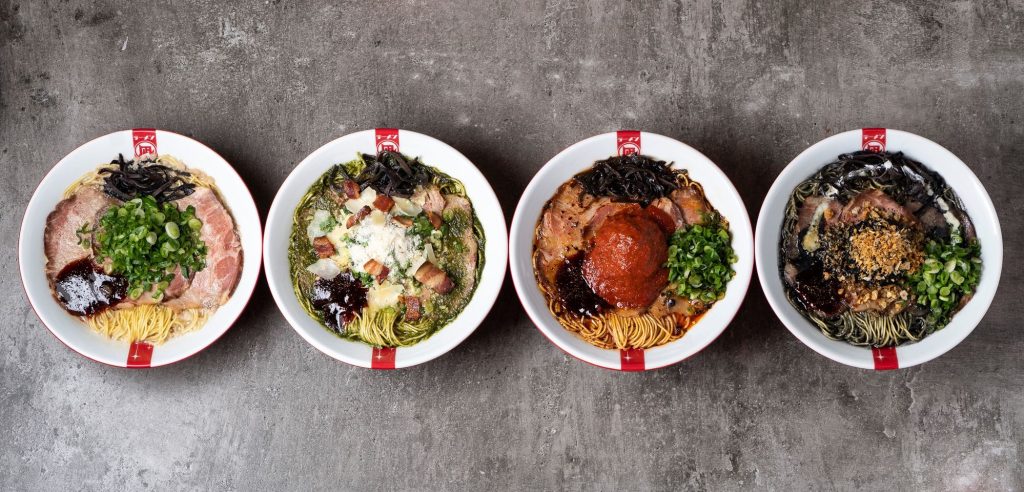
Ramen Nagi
San Diego’s weather screams smoothies, but climate won’t deny us our cravings. Fact is, nothing deep-tissue massages your bones like soup. And this year, the city was riddled with ramen shops and phở shops and birria-in-consomme shops. Soup everywhere. The biggest arrival was Nagi, started two decades ago in Tokyo by chef Satoshi Ikuta as a pop-up that turned into an international phenomenon with dozens of locations across Asia. Now their benevolent encroachment has begun stateside, and UTC landed just the fifth US location.
It’s Hakata-style ramen, a southern Japan specialty anchored by the almighty pork cloud of tonkotsu. The Original King is the tonkotsu, the Red King is miso-minced pork, the Black King has black garlic and squid ink, and the Green King is basil and parm and olive oil in tonkotsu. Customization is Nagi’s USP: noodle thickness and al dente-ness and strength of broth are all adjustable to your whim.
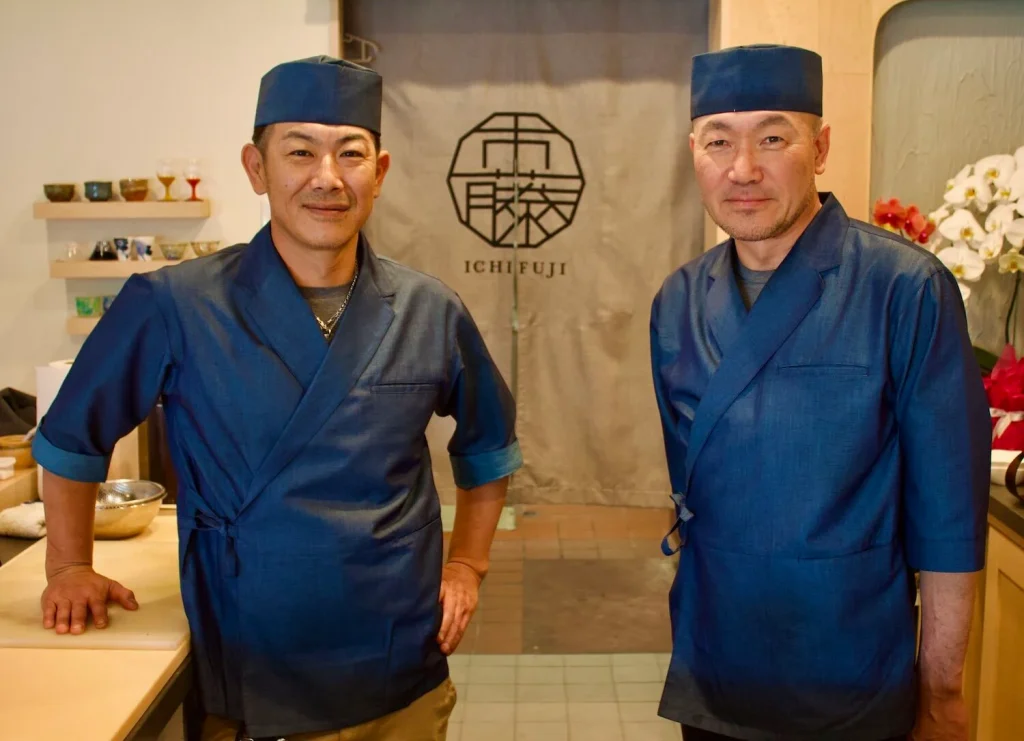
Ichifuji
With all due respect to hallowed Rose Donuts, Linda Vista was largely college food until the last couple of years. But in 2023, it got two great new Asian options: White Rice from Phil Esteban (SDM’s 2020 Chef of the Year) and Ichifuji. Ichifuji is the new project from Masato Fujita (who comes from two-Michelin-starred San Diego sushi restaurants Soichi and Tadokoro) and Hiroshi Ichikawa (Taka Sushi). The options are eight-course omakase or nigiri—both of which include sakizuke (seasonal apps), soups (like a dark red miso), three-day miso-marinated black cod, and dessert. San Diego’s sushi world is near the top in the US now, plain and simple.
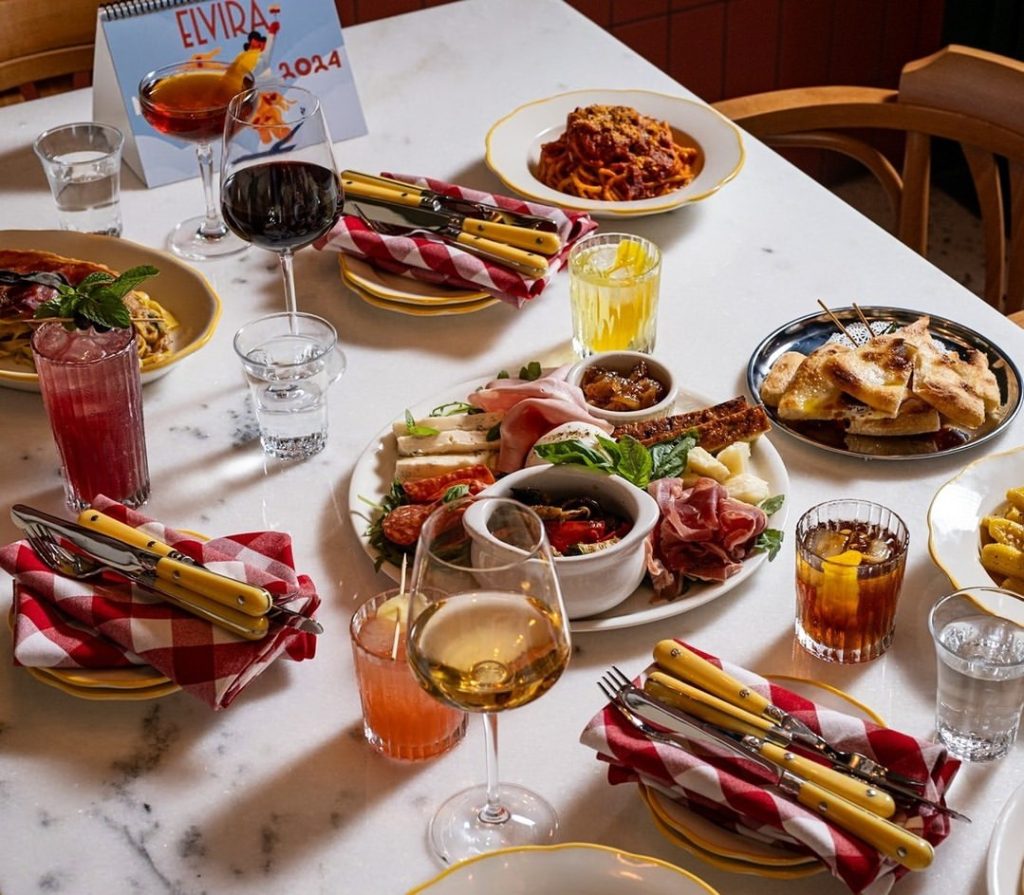
Elvira
Point Loma Heights’ Cesarina—which began a couple years ago as a farmers market booth run by a married couple of Italian expats—serves one of the best plates of pappardelle in San Diego. The pasta is handmade, all day long (got my vote this year for Best Pasta in the city), with the rest of the menu centered around chef Cesarina Mezzoni’s recipes. The demand far outstripped the size of their original restaurant, so now plans are afoot to sprinkle sister concepts across San Diego. Elvira is first, finally activating the iconic (and similarly petite) restaurant spot near Robb Field that was once home to Thee Bungalow and Bo-Beau. This is their ode to Roman street food: pizza, pasta, mains like cod and ground lamb cutlets.
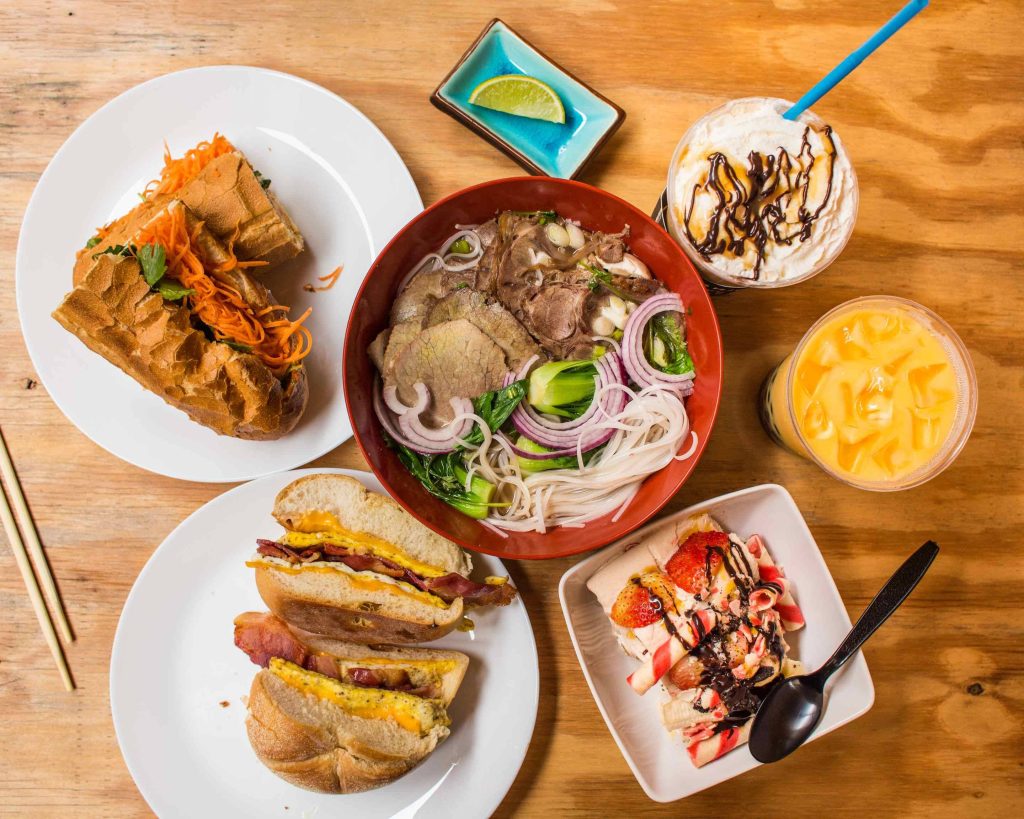
Haidilao
Historians have often credited cooking as the beginning of civilization and culture, the idea being that ancient humans huddled around a fire cooking food, and, while we waited, we formed rituals and language and customs and secrets. Chinese hot pot is the closest restaurant experience to that old huddling.
This year, San Diego got a branch of Sichuan’s super mega international star, Hidalao (over 1,500 locations now worldwide), and it doesn’t disappoint. It’s massive (fits 300 people), and you choose your own adventure with noodles (vermicelli, fried tofu skin, udon, instant noodle, and so on), soup bases (tomato, Sichuan spicy hot, mushroom, pork tripe), and proteins that are both widely familiar (chicken, pork sausage, Spam) and not so much (beef heart, duck intestine). You’ll occasionally see workers decked in white hand-pulling noodles in the dining room, tableside, as if they’re effortlessly and magically manipulating the strands of time itself.
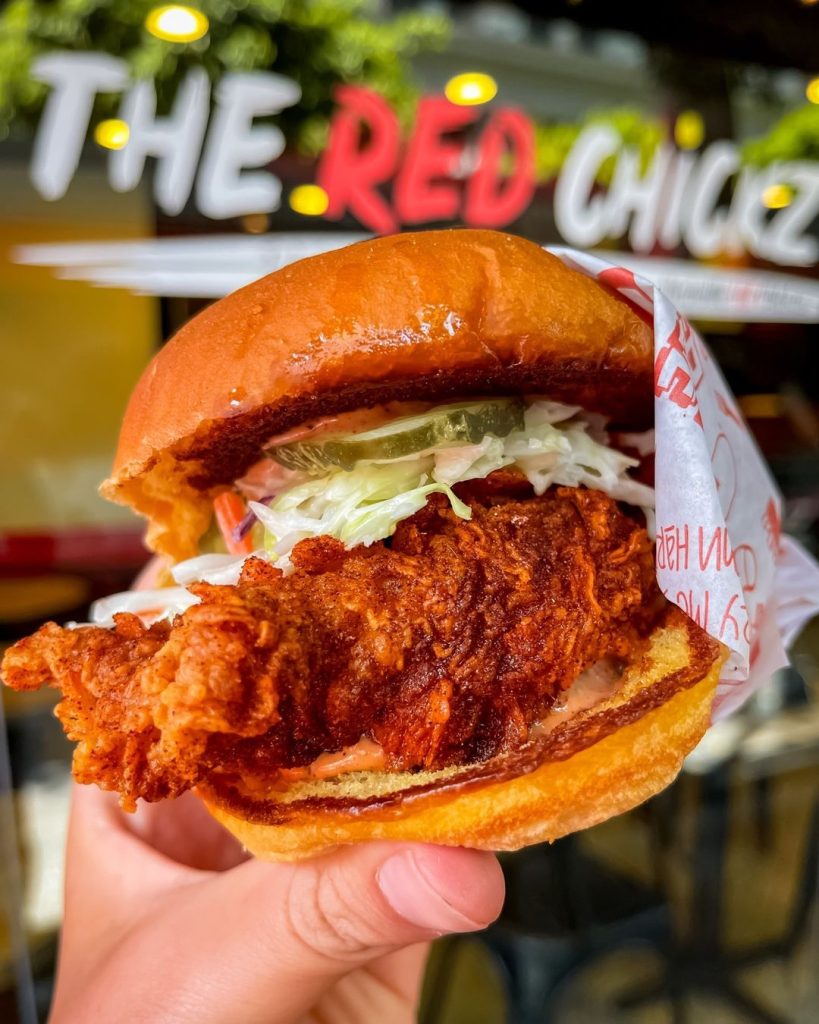
Red Chickz
The fried chicken sandwich wars are still lingering, but a few clear victors have been named, and LA’s Red Chikz is one of them. TikTok fueled its rise, but it’s delivered on social hype with one of the crispiest, moistest Nashville-style options on the market. The first San Diego location landed at the Shoppes at Carlsbad this year. Even never-chain people are won over. The chicken is breaded and made to order, and Red Chikz uses halal chicken in tenders and wings (in terms of quality, halal is near apex). Each sandwich comes in seven different levels of pain (from “country” to “glow” to “inferno”), and the wedge fries may be even better than the sandwich.
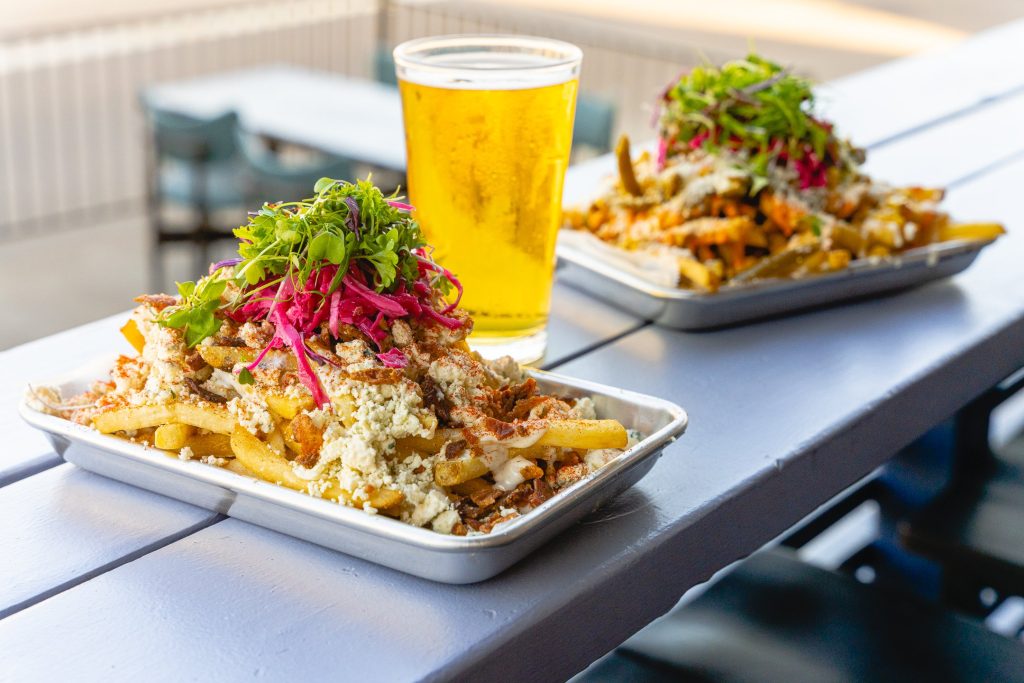
Rosemarie’s Burgers & Brews
Rosemarie’s had a real successful run as a trailer, slinging “sliders” (an understatement, since each slider is massively packed with food) to the crowd at Harlan Brewing in Bay Park. This year, they got a permanent location in Mission Beach, and it’s a hell of a hangout. Owner Nick Balsamo went alley-diving in OB to find funk for the décor, and it looks like some very cool grandmother’s living room. Fitting, since it’s named after his Sicilian grandma. The sliders are mostly Wagyu on brioche buns, with hot chicken options and fried Korean BBQ eggplant options. And they serve beer. You have a new office.
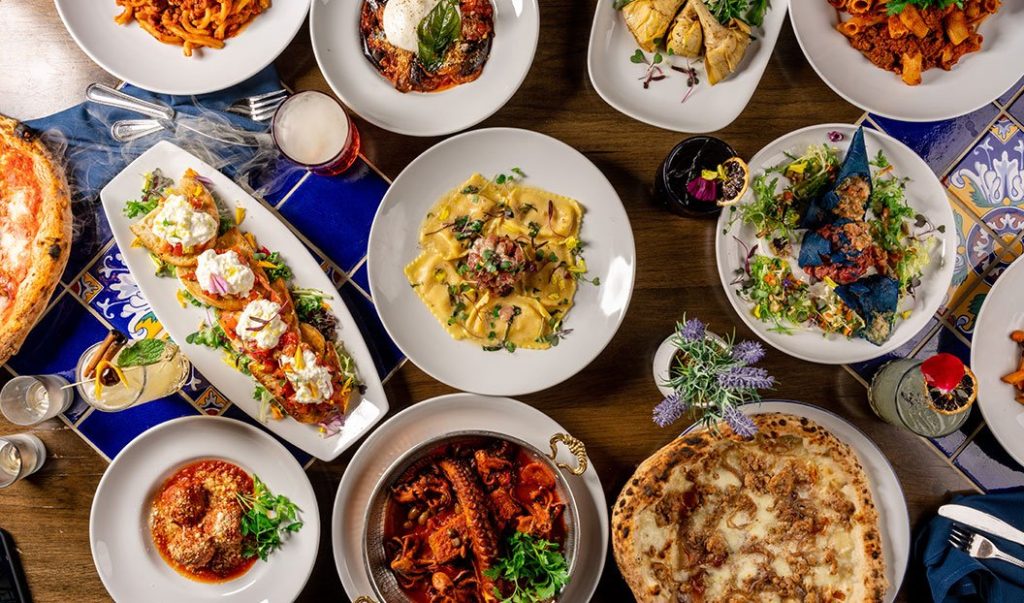
Amalfi Cucina Carmel Valley
The spread of Amalfi is a very good and expected thing for North County. Four Italian friends (a few who helped grow the Buona Forchetta empire) started their own concept at Lake San Marcos (a wild little world of human-made waterside life) and were so successful that they’re up to four locations in our oft-ignored northern burbs of San Diego. It’s all based on chef Marcello Avitabile’s Amalfi Coast–inspired cooking. He’s a six-time World Pizza Champion, so any pie coming out blistered from that oven is fantastic. But it’s the smaller gems, like his simple pan-fried Roman artichokes over arugula, that win over the day. The bar in Carmel Valley has amaros and negronis and old-fashioneds.
